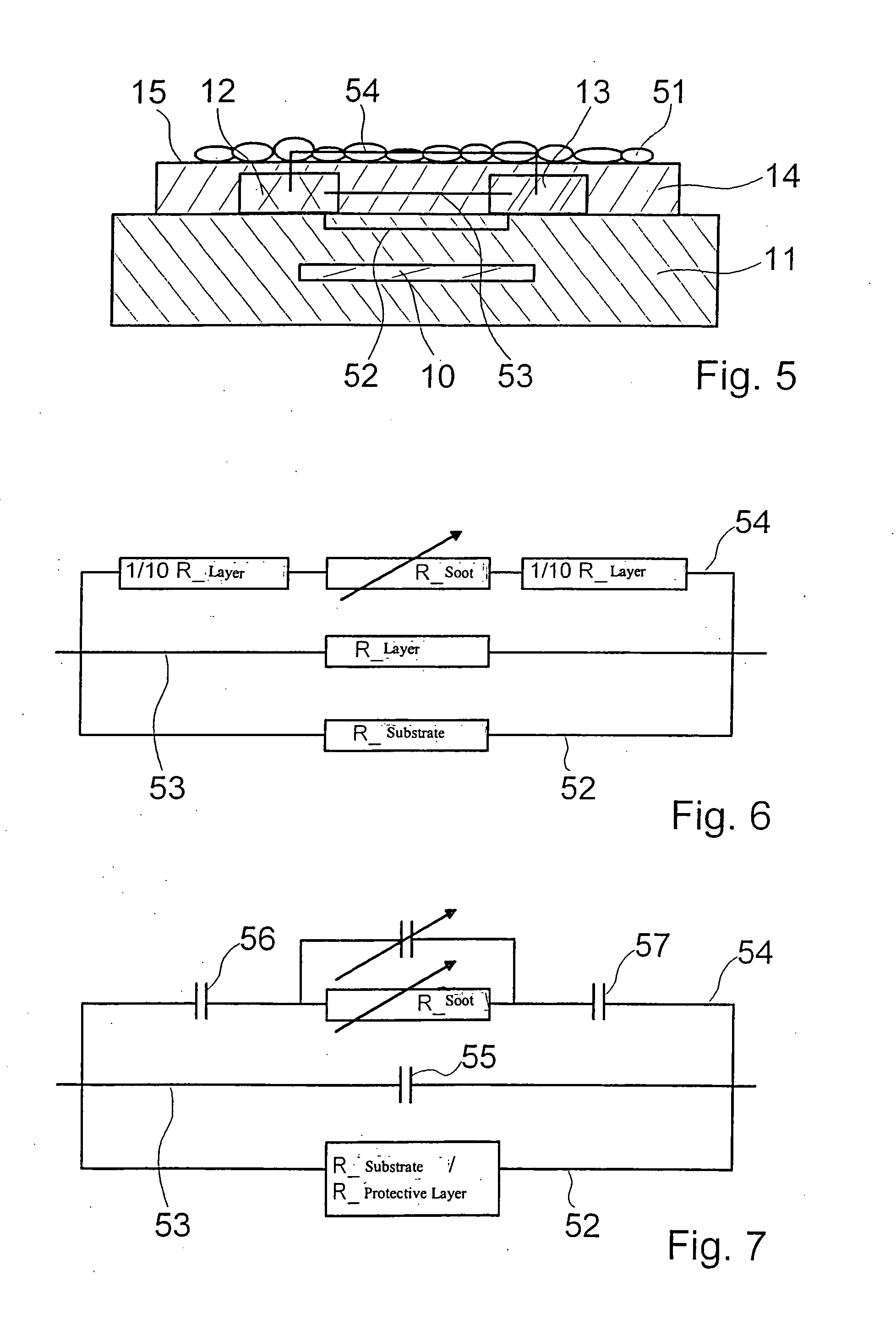Sensor for detecting particles
a technology of detecting particles and sensors, applied in the direction of instruments, machines/engines, material electrochemical variables, etc., can solve the problems of interfering with the measurement effect, prone to breakdown of soot sensors of the type described abov
- Summary
- Abstract
- Description
- Claims
- Application Information
AI Technical Summary
Benefits of technology
Problems solved by technology
Method used
Image
Examples
Embodiment Construction
[0029] A sensor 1 for detecting particles in a gas flow is illustrated in FIGS. 1 and 2. Sensor 1 is used for installation in an exhaust system of a motor vehicle and is preferably positioned downstream from a soot filter of a motor vehicle having a diesel engine.
[0030] Sensor 1 includes a plate-like carrier layer 11, used as the substrate, which is manufactured from a highly insulating material, for example, from a ceramic such as aluminum oxide. It is also conceivable to manufacture carrier layer 11 from an alternative material, such as yttrium-stabilized zirconium dioxide. At high operating temperatures, an additional insulation layer may be necessary for insulation.
[0031] A heating element 10, which is only illustrated symbolically here and which is used for burning sensor 1 free of possibly accumulated particles, such as soot particles, is integrated into carrier layer 11.
[0032] A structure made of two interdigital comb electrodes 12 and 13, which are manufactured from plati...
PUM
| Property | Measurement | Unit |
|---|---|---|
| operating temperatures | aaaaa | aaaaa |
| insulating | aaaaa | aaaaa |
| electrical conductivity | aaaaa | aaaaa |
Abstract
Description
Claims
Application Information
 Login to View More
Login to View More - R&D
- Intellectual Property
- Life Sciences
- Materials
- Tech Scout
- Unparalleled Data Quality
- Higher Quality Content
- 60% Fewer Hallucinations
Browse by: Latest US Patents, China's latest patents, Technical Efficacy Thesaurus, Application Domain, Technology Topic, Popular Technical Reports.
© 2025 PatSnap. All rights reserved.Legal|Privacy policy|Modern Slavery Act Transparency Statement|Sitemap|About US| Contact US: help@patsnap.com



